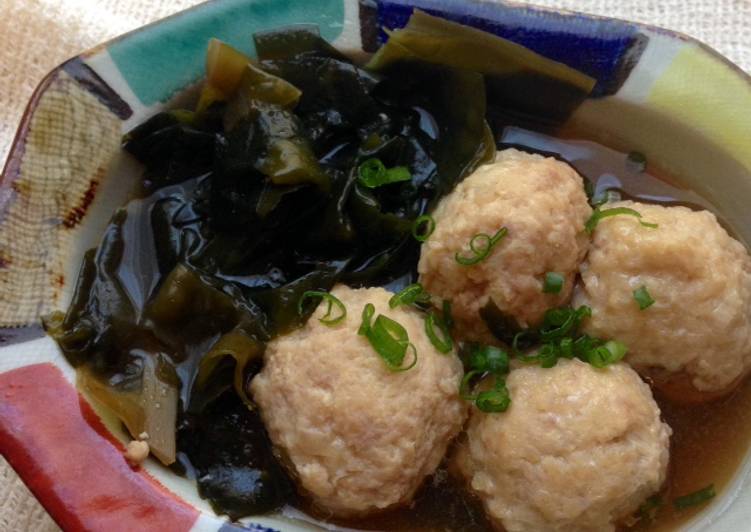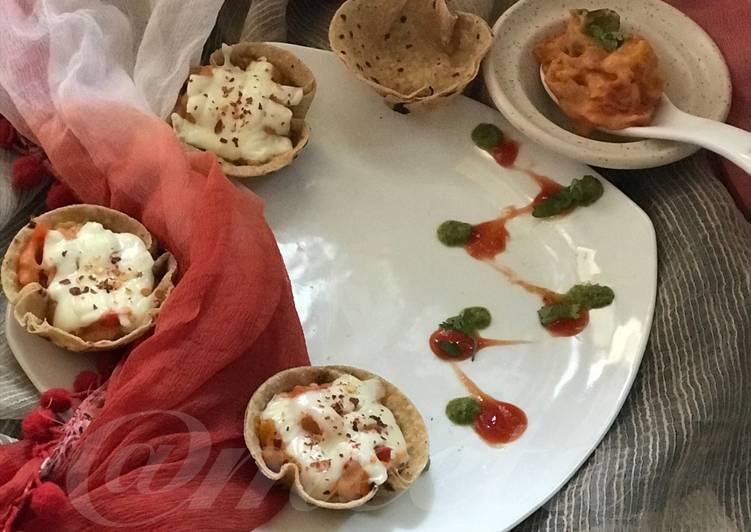
Hello everybody, I hope you are having an amazing day today. Today, we’re going to prepare a distinctive dish, japanese chicken tsukune and wakame stew. It is one of my favorites. This time, I am going to make it a bit tasty. This will be really delicious.
Tsukune are tender ground chicken skewers with bits of shiso leaves and scallions, drizzled with sweet soy sauce. I highly recommend giving this Tsukune recipe a try. Drizzled with sweet soy sauce, these Japanese chicken meatball skewers are absolutely delicious.
Japanese Chicken Tsukune and Wakame Stew is one of the most popular of current trending meals on earth. It is appreciated by millions every day. It is simple, it is fast, it tastes delicious. They are fine and they look wonderful. Japanese Chicken Tsukune and Wakame Stew is something which I have loved my whole life.
To begin with this particular recipe, we must prepare a few ingredients. You can have japanese chicken tsukune and wakame stew using 12 ingredients and 9 steps. Here is how you cook it.
The ingredients needed to make Japanese Chicken Tsukune and Wakame Stew:
- Prepare 100 g or a handful of fresh, pre-boiled wakame (or about 20 g dried, or 1/3 cup salted)
- Make ready – Tsukune –
- Prepare 200 g ground chicken (1/2 lb)
- Prepare 1/2 Tbsp sugar
- Make ready 1/4 spring onion (negi) or onion, minced
- Get 1 egg, beaten
- Get 1 tsp grated fresh ginger
- Prepare – Soup –
- Make ready 2 cups Japanese soup stock/dashi
- Take 2 Tbsp sugar
- Make ready 3 Tbsp soy sauce
- Take 2 Tbsp sake
Japanese Chicken Meatballs called 'Tsukune' are one of the regular yakitori dish items. Soft and bouncy chicken meatballs are skewered and chargrilled with sweet soy sauce, i.e. yakitori sauce. The key to my soft and juicy meatballs is the grated onion and the amount of fat in the chicken mince. Tsukune (つくね、捏、捏ね) is a Japanese chicken meatball most often cooked yakitori style (but also can be fried or baked) and sometimes covered in a sweet soy or yakitori tare.
Instructions to make Japanese Chicken Tsukune and Wakame Stew:
- How to prepare wakame: If using fresh, pre-boiled wakame, simple rinse well and cut into smaller pieces.
- For dried wakame, add about 20 g to a medium bowl and cover with plenty of warm water. It seems like a tiny amount but it will triple or quadruple in size! Let soak for a few minutes until it's rehydrated. Drain well.
- For salted wakame, wash off the salt and place into a strainer or colander. Pour boiling water over the wakame then rinse with cold water and cut into smaller pieces.
- Prepare the soup stock by adding dashi, 2 Tablespoons sugar, 3 Tablespoons soy sauce and 2 Tablespoons sake into your cooking pot.
- Make the meatballs next. Mix together chicken, minced naganegi/onion, grated ginger, 1/2 Tablespoon sugar, 1/4 teaspoon salt and beaten egg. Mix well.
- Make 1-inch/3 cm meatballs (about a Tablespoon each) until all chicken is used up.
- Bring the soup to a boil and add the meatballs to the pot. Lower heat to a simmer and cook for about 5 minutes, turning them over after 2-3 minutes.
- Add the prepared wakame and cook until it's just heated.
- Divide the meatballs and wakame into bowls and pour over some of the soup. Serve and enjoy.
Amazing Yakitori Chicken Recipe - Japanese Chicken Yakitori Recipe _ How to make Yakitori. Chicken meatballs called tsukune are a Japanese-restaurant favorite–they're essentially a chicken sausage mixture flavored with garlic and ginger. Use flat sword-shaped skewers instead of traditional round bamboo skewers to keep the meatballs from slipping when you try to turn them. Cream stew is a popular Japanese dish that is often served at home, as well as family style restaurants and cafes. Tsukune (Japanese Chicken Meatballs) make a terrific party snack.
So that’s going to wrap this up with this exceptional food japanese chicken tsukune and wakame stew recipe. Thank you very much for your time. I’m sure that you will make this at home. There is gonna be more interesting food in home recipes coming up. Don’t forget to save this page in your browser, and share it to your family, friends and colleague. Thanks again for reading. Go on get cooking!

